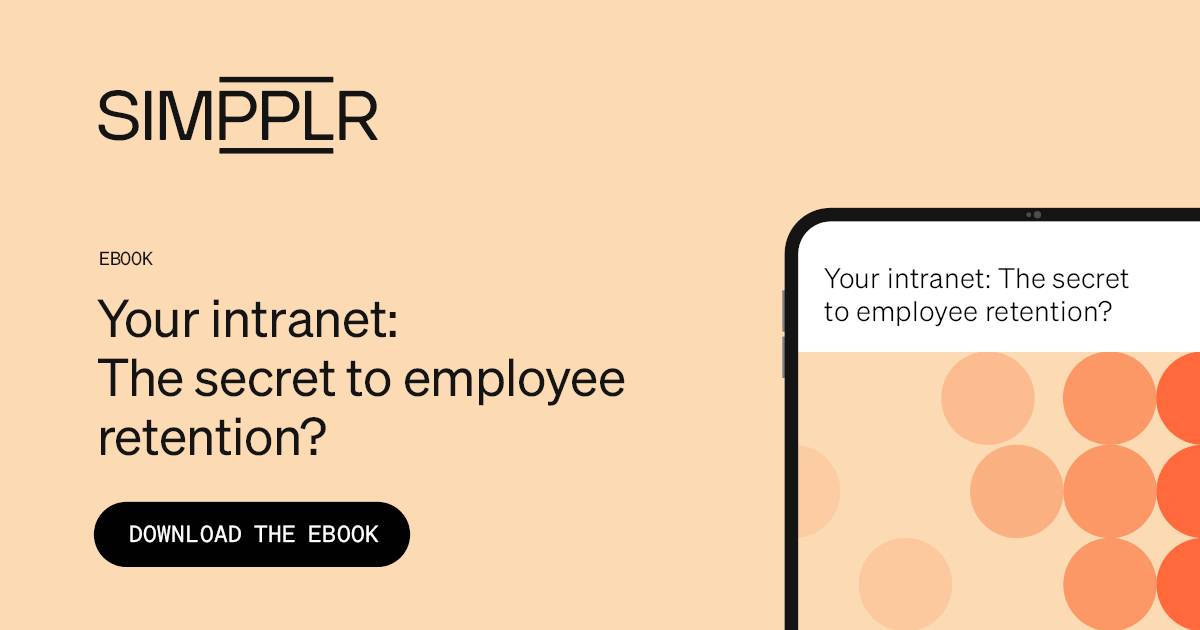Employee turnover defined:
Employee turnover is the departure of people from a company over a certain period and can happen for many reasons. Some are voluntary departures, some involuntary. Depending on the circumstances, employee turnover can be positive or negative for a company. Generally speaking, if employees feel valued, supported, inspired, secure, and well-compensated, they will remain, but if any of these factors are not true, they might move on.
- 1 How to calculate the employee turnover rate
- 2 Types of employee turnover
- 3 What causes employee turnover?
- 4 What part does company culture play in increased employee turnover rates?
- 5 External factors that contribute to turnover
- 6 What are the consequences of high employee turnover?
- 7 How much does employee turnover cost?
- 8 How to reduce employee turnover
- 9 Conclusion
If turnover is unnaturally high, this means less talent is available to pursue company goals. And the hiring and onboarding of replacement staff is costly and time-consuming. During this process, service capabilities can be lowered, affecting the customer. Either way, any revenue stream is disrupted by high employee turnover, and company morale can also take a blow.
After the Covid-19 pandemic, there was a shift in attitude toward work-life balance, causing global employee turnover repercussions in the workplace, this is widely known as the Great Resignation. Bearing this in mind, let’s shine a light on the turnover process to discover why it’s essential for business.

How to calculate the employee turnover rate
It’s important to calculate the turnover rate of your company. Once this is known, a company can maintain, or work toward, a stable environment where turnover is minimal and well-assimilated workers are retained. This results in high productivity and profitability. Consistent monitoring of the rate will identify problems and enable preventative measures.
Being familiar with the stability, or otherwise, of your workforce empowers you to identify costly areas of weakness. In addition, knowledge of turnover rates enables comparison with other companies and the establishment of sector norms. By closely monitoring employee movement, it’s possible to identify trends, and this allows for future planning.
Types of employee turnover
The departure of employees happens for many reasons. Sometimes, an employee is fired, laid off, or simply resigns because of a change in circumstances. How do these departures affect a company? Let’s look at different types of turnover in more detail.
- Voluntary turnover
This means an employee leaves a company by choice. This can be because they have found another job, or there’s been a change in personal circumstances, and they need to relocate, or they wish to retire or pursue an educational goal. - Involuntary turnover
This occurs when an employee has not met performance expectations and is let go. Reasons can be poor assimilation, lack of employee engagement, commitment, and therefore productivity, or misconduct. Depending on the sector (e.g., hospitality or agricultural), some businesses implement seasonal layoffs, and these, along with company-wide layoffs, also fall into the involuntary termination sphere.
At first glance, it would seem that voluntary employee turnover is okay while involuntary employee turnover is not, but this isn’t necessarily the case. In many incidences, little can be done regarding employees who leave a company of their own volition due to personal reasons. But what about the valued employee who voluntarily resigned to find new employment? This is in no way an advantage to your company. Time and money have been spent on recruitment, hiring, onboarding, and assimilation, and knowledge and experience have been gained. This talent is now to be funneled to another organization, and worse still, it could be a competitor.
On the other hand, can involuntary employee turnover ever be a good thing? Yes, because an employee who is not fully engaged can negatively affect productivity and lower morale and, if retained longer than necessary, can eventually cause more people to resign. Unfortunately, this involuntarily resigned employee will have incurred company costs by going through the same processes applicable to the voluntary situation above. Still, in the long run, it is preferable to cut losses and move forward to better talent.

What causes employee turnover?
Very little can be done to prevent the natural process around voluntary employee turnover, as this happens beyond the company’s influence. People relocate, start a family, re-train, retire, or decide to embark on an entirely new direction in life. Although losing a talented employee is always harmful, some things cannot be helped.
What can be helped, though, is the prevention of voluntary turnover by rooting out weak spots in company culture, communication, connection and a sense of community. Is your company complicit in any of the following factors? If so, experienced employees, well-trained by you, are likely to jump ship.
- Poor onboarding
This can cause an employee to leave almost before they have started. A comprehensive onboarding process is costly and can take up to a year. This is a significant financial investment, not to be disregarded. - Inadequate compensation
If appropriate compensation is not forthcoming, employees will move on. The same goes for benefits and perks. Employees who feel undervalued will disengage and look to their competitors for better support. Focus moves away from the company mission, and productivity drops. This, in turn, disrupts the revenue stream. So, even though a company may feel they are saving money by not increasing salaries according to expectations, this process will cost money. - Lack of opportunity
Productive employees will desire and need opportunities to grow and advance. If these opportunities for personal and professional development are unavailable, ambitious staff will look elsewhere, and your competitors could benefit from your investment. - Bad or poor company culture
Weak company culture hurts the cohesive nature of a company. Healthy company culture is increasingly vital to would-be employees and a critical element in the successful recruitment of top talent. Make sure the essential aspects of your company culture are in place, or you may fail to attract star performers. - Lack of flexibility
The lack of flexiblity within a company is an essential factor regarding employee turnover. Particularly since the Covid 19 pandemic, people have become more productive in hybrid workspaces. Offering flexibility is essential as it is now the competitive norm, enabling employees to gain from a healthy work-life balance. This increases productivity and benefits company profits. - Insufficient support
Insufficient resources and support are frustrating and time-consuming for any employee. It’s vital for staff to have the best resources for the job at hand, or they may look to the competition to establish where better resources mean higher productivity and better compensation. Make sure your employees have good software and IT support so they can navigate a cost-effective path toward company goals. - Poor leadership
Poor leadership is a significant factor in voluntary employee turnover. Without guidance, even the most talented person will lose focus, disengage, and seek career advancement elsewhere. Regular monitoring of organizational structure is crucial to determine weak leadership and how best it may be rectified.
What part does company culture play in increased employee turnover rates?
Although not the case in the past, company culture now plays a significant role in the retention of employees as well as employee turnover. How, then, can company culture be developed and applied to prevent high levels of employee turnover?
Competitive business leaders now operate in a people-first work environment where employees are recognized as valuable assets. A robust company culture underpins this through shared, communicated ethics and values. Other building blocks include transparency, trust, inclusivity, diversity, recognition, and reward. Promoting healthy work-life balance and well-being are also crucial to healthy company culture.
Creating, developing, and maintaining a desirable work culture is of the utmost importance because current employees will be encouraged to remain. In contrast, prospective employees will consider good culture a compelling reason to join a company. Many employees now rate company culture and compensation equally.
Once a culture is in place, it must be monitored as a priority. Company morale is negatively affected if employees become disengaged, unproductive, or absent due to a lack of motivation. This allows toxic culture to take hold, and employee turnover is sure to follow.
External factors that contribute to turnover
External factors beyond weak company culture can also increase employee turnover. Apart from voluntary departures, already discussed, there are several external factors with which business leaders should familiarize themselves.
- Economy
The economy plays a vital role in the retention or turnover of staff. While it is impossible for most business leaders to significantly influence the economy, they must know that the local economy particularly has a direct bearing on the well-being of employees and their families. A poor local economy may force employees to seek work elsewhere and strive for a better environment. - Company reputation
The reputation of an organization contributes to high employee turnover. Nobody wishes to work for a company with a poor reputation. Pay attention to the hard-won good reputation of your company because it is easily lost through lack of communication and complacency within the company culture. People will leave a company with a poor reputation, not only because of internal negativity but also because of community pressure. - Competition in the market
High competition can cause a scramble for revenue beyond what’s ethical. This must be avoided because if suppliers and customers see that values have been compromised, their loyalty will be lost. Employees, too, will be inclined to leave a company where values are compromised. - Work-family conflict
Family-work conflict can influence an employee to underperform or resign and seek alternative employment. Ensure healthy work-life balance options are available within an inclusive culture. - Employment rates
Low employment rates, whether local, national, or global, will often encourage ambitious workers to take that chance to move on. There’s not much to be done about this apart from staying competitive regarding company culture, opportunity, and compensation.
What are the consequences of high employee turnover?
High or constant employee turnover matters because it results in a costly drain of knowledge and experience. This leads to investment loss, and it is worth remembering that severance packages are also an outlay with no ROI.
When people resign or are laid off, their co-workers will wonder if they should change jobs or watch their backs in case they get laid off too. Either way, employee turnover hurts a previously stable workforce, and those left behind can experience low morale. By monitoring employee attitudes, poor morale can be tackled at the grassroots level before it harms company culture.
Employee turnover can also result in losing belief in company team-building and leadership competencies.
Deterioration of service quality can occur when inexperienced workers must pick up the slack caused by departed colleagues. This directly affects the bottom line and must be carefully managed.
Remember that constant recruiting and training necessitated by high employee turnover will draw focus away from company goals. Productivity and revenue will be directly disadvantaged, and apart from the loss of expertise, the loss of customers could follow.
How much does employee turnover cost?
Forbes tells us that the cost of employee turnover can kill your business. In 2017 – and nothing has got cheaper since then – it was estimated that turnover could cost a company over 30% of an employee’s annual salary. It, therefore, follows that on a salary of $45,000 per annum, around $15, 000 was needed to replace a departing employee. This means that in a company of 100 employees on that salary, with a modest employee turnover rate of 10% per annum, $150,000 was required to replace lost employees. For a company employing 1,000 people likewise on a modest turnover of 10% per annum, we’re in the ballpark of $1,500,000.
How are the rates so high?
- Advertising costs money and plenty if you outsource to an agency. Agencies can charge around 25% of the recruit’s first-year salary if there is a successful placement.
- If several candidates need to be interviewed, travel costs may be incurred.
- The successful candidate might need to relocate, and this costs money.
- Reference checks and any pre-employment tests can be added to the bill.
- Onboarding is pricey and time-consuming.
- Overtime work done by those filling in between the departed employee and the recruit needs compensation.
Organization and administration of all the above processes also consume time and money. If this isn’t convincing enough to promote the highest employee retention rates possible, look at an employee turnover calculator and check your stats.
How to reduce employee turnover
Simply put, turnover can be reduced by making your company the best workplace. If turnover rates are increasing, systems must be monitored or put in place if they are not yet present to determine elements that negatively affect commitment and productivity.

Other ways to reduce employee turnover are:
- Utilize an efficient onboarding process so new employees feel welcome and included.
- Offer competitive compensation so employees know they are valued.
- Give employees the opportunity to grow and advance, and the company will thrive.
- Provide a strong company culture where employees feel included and respected.
- Be flexible, as the opportunity to work in a hybrid workspace may encourage an employee to stay on instead of resigning.
- Supply up-to-date resources and support, so employees have all they need to produce their best work.
- Ensure competent leadership, so employees feel stable and remain focused.
Conclusion
For a business to succeed, a low employee turnover rate is essential. This fosters stability, strengthens company culture, and positively affects the bottom line through high productivity and customer satisfaction.
Efficient onboarding, employee development opportunities, reasonable compensation, flexibility, and quality resources and support contribute to desirable employee retention rates.
The ‘tone from the top’ is crucial, and its trickle-down effect affects the rest of the company. Employees will look to company culture and leaders to confirm company ethics, commitments, and broader corporate values.
To prevent high employee turnover rates, and improve the overall employee experience, the empathetic handling of talent is the best way forward for an innovative company.

Watch a 5-minute demo
See how the Simpplr employee experience platform connects, engages and empowers your workforce.
- #1 Leader in the Gartner Magic Quadrant™
- 90%+ Employee adoption rate






